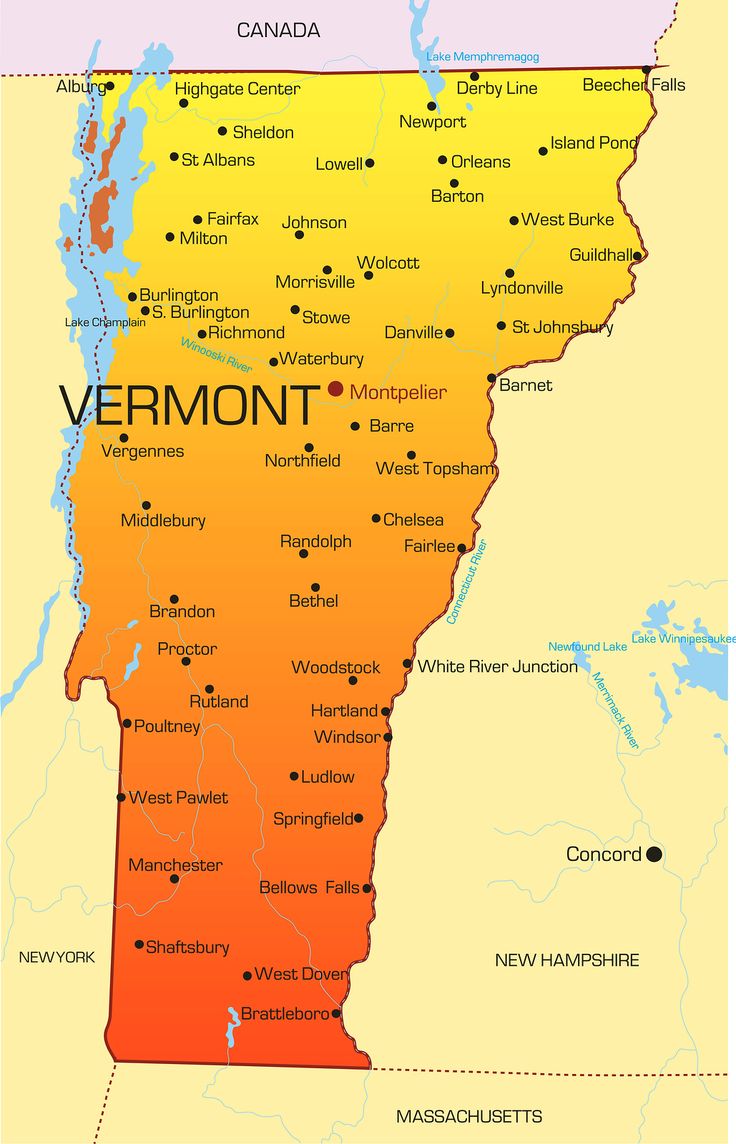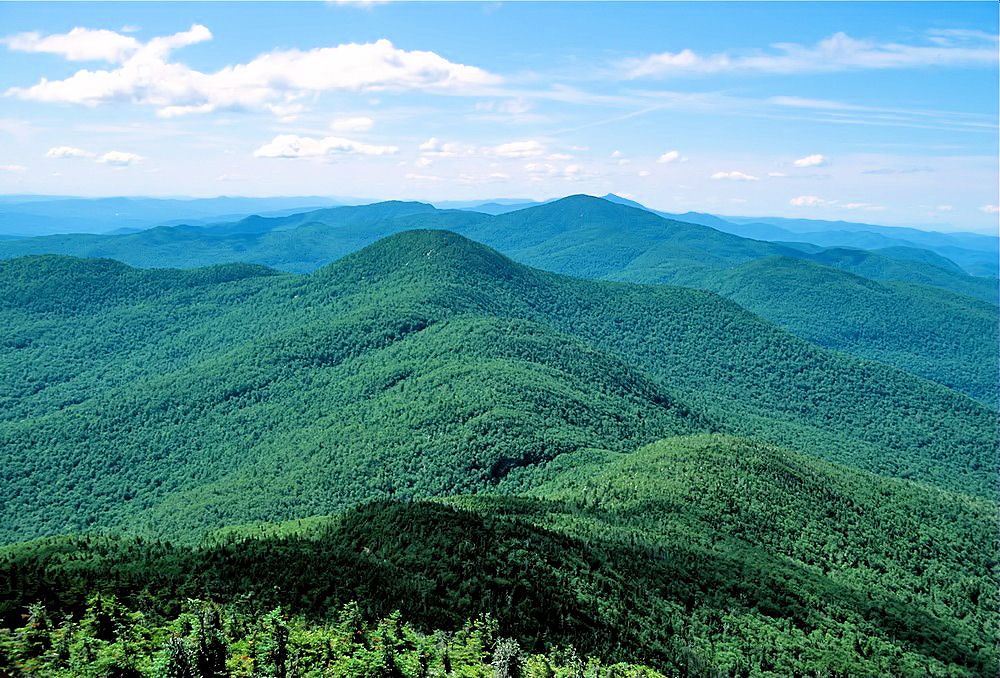Introduction to Vermont
Vermont, located in the northeastern region of the United States, is known for its picturesque landscapes, historic towns, and vibrant culture. This guide explores the geography, history, demographics, and unique features of Vermont through maps and factual insights.
Geography of Vermont
Vermont is bordered by Massachusetts to the south, New Hampshire to the east, New York to the west, and the Canadian province of Quebec to the north. Its terrain is characterized by the Green Mountains running north-south through the state, with lush forests, rivers, and lakes dotting the landscape.
Key Geographic Features
Green Mountains
Stretching over 250 miles, these mountains are central to Vermont’s identity and offer scenic beauty and recreational opportunities.
Lake Champlain
Forming part of the western border, Lake Champlain is one of the largest freshwater lakes in the United States, offering boating, fishing, and scenic views.
Vermont Counties and Regions
Vermont is divided into 14 counties, each offering distinct cultural and geographical characteristics. Major regions include the Champlain Valley, the Northeast Kingdom, and the Green Mountains.
Historical Overview
Early Settlement and Statehood
Vermont’s history dates back to indigenous peoples such as the Abenaki and Iroquois tribes. European exploration began in the 1600s, with French and British settlements leading to conflicts over territory. Vermont declared independence in 1777 and became the 14th state to join the Union in 1791.
Revolutionary War and Beyond
During the Revolutionary War, Vermont played a crucial role, and its Green Mountain Boys gained fame for their military exploits. Post-war, Vermont developed as an agricultural and manufacturing hub, later transitioning to tourism and service industries.
Vermont Demographics
Population and Ethnicity
As of the latest census, Vermont has a population of approximately 650,000 people. The state is predominantly Caucasian, with smaller populations of Hispanic, African American, and Asian communities.
Economic Overview
Vermont’s economy is diverse, with industries including agriculture (dairy farming), tourism, manufacturing (especially of specialty foods and products), and healthcare. The state’s economic stability is supported by a strong emphasis on local businesses and sustainable practices.
Cultural Heritage and Attractions
Arts and Culture
Vermont boasts a rich cultural scene with numerous art galleries, theaters, and music venues. The state is known for its support of local artists and artisans, contributing to its vibrant cultural tapestry.
Tourist Destinations
Popular tourist attractions include
- Ben & Jerry’s Factory: Located in Waterbury, visitors can tour the famous ice cream factory and learn about its history and production process.
- Shelburne Museum: A unique collection of Americana spread across 45 acres, featuring historic buildings, folk art, and exhibits.
Vermont Maps
Geographic Maps
- Topographical Maps: Detailed maps showing elevation changes, rivers, and mountain ranges, essential for outdoor enthusiasts and researchers.
- Road Maps: Essential for navigation, these maps highlight major highways, byways, and scenic routes across the state.
Cultural and Historical Maps
Historic Maps
Showcasing Vermont’s evolution from early settlements to its development as a state, including changes in county boundaries and land use over time.
Cultural Maps
Highlighting cultural landmarks, museums, and heritage sites across Vermont, providing insights into the state’s diverse cultural heritage.
Fun and Interesting Facts
- State Motto: “Freedom and Unity” reflects Vermont’s history of independence and its strong community spirit.
- Maple Syrup: Vermont is the leading producer of maple syrup in the United States, known for its high-quality product and annual Maple Open House Weekend.
- Fall Foliage: Vermont is famous for its spectacular autumn foliage, drawing visitors from around the world to witness the vibrant colors of its forests.
Frequently Asked Questions (FAQs)
What is the capital of Vermont?
Montpelier is the capital city of Vermont, known for its small size and historic charm.
What are the major cities in Vermont?
Aside from Montpelier, Burlington is the largest city in Vermont, known for its vibrant arts scene and scenic location on Lake Champlain.
What is the state bird and flower of Vermont?
The state bird of Vermont is the Hermit Thrush, and the state flower is the Red Clover.
What are 5 interesting facts about Vermont?
Vermont is famous for its maple syrup production, being the largest producer in the U.S. It was the first state admitted to the Union after the original 13 colonies. Vermont has the highest ratio of dairy cows to people in the United States. It is home to Ben & Jerry’s Ice Cream, founded in Burlington in 1978. Vermont has no billboards along its highways, maintaining its scenic beauty.
What are the geographic features of Vermont?
Vermont is characterized by the Green Mountains running north-south through the state, providing scenic beauty and recreational opportunities. It is also known for Lake Champlain, one of the largest freshwater lakes in the United States, which forms part of its western border.
What is the state of Vermont famous for?
Vermont is famous for its maple syrup, dairy farming, picturesque fall foliage, and its progressive policies, including being the first state to legalize civil unions for same-sex couples in 2000.
Why is it called Vermont?
The name “Vermont” is derived from French words meaning “green mountain,” reflecting the state’s lush mountainous terrain.
Does Vermont have mountains?
Yes, Vermont is home to the Green Mountains, a range running the length of the state, offering skiing, hiking, and scenic vistas.
What region is Vermont in?
Vermont is located in the northeastern region of the United States, bordered by Massachusetts to the south, New Hampshire to the east, New York to the west, and the Canadian province of Quebec to the north.
What is the largest city in Vermont?
Burlington is the largest city in Vermont, known for its vibrant arts scene, scenic waterfront on Lake Champlain, and as the home of the University of Vermont.
Why is Vermont special?
Vermont is special for its natural beauty, including its mountains and lakes, its commitment to environmental conservation, its progressive social policies, and its strong sense of community and local pride.
Conclusion
Vermont’s blend of natural beauty, historical significance, and cultural richness makes it a unique destination in the United States. From its verdant landscapes to its vibrant communities, Vermont offers a wealth of experiences for residents and visitors alike.
- 10 Biggest Urban Parks In The World - September 30, 2024
- 10 Animals Found In Brazil - September 29, 2024
- The Best Small Towns To Retire In Virginia - September 21, 2024



